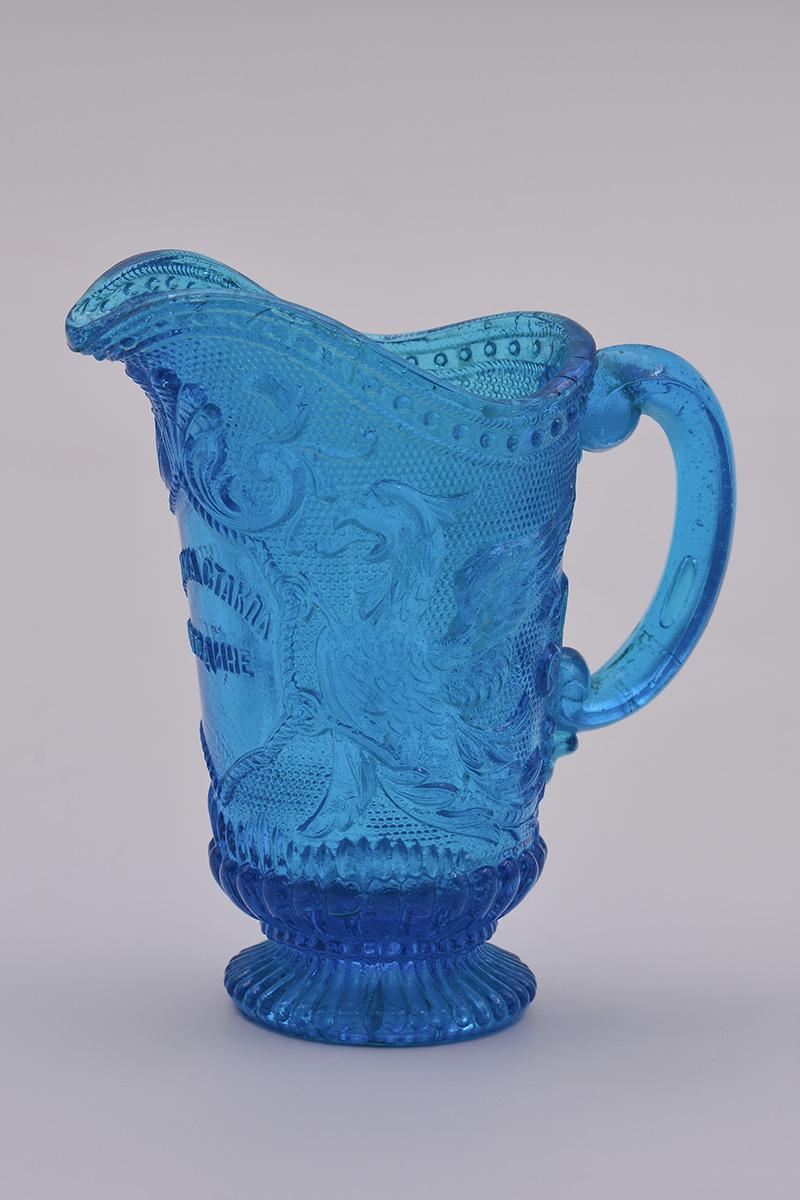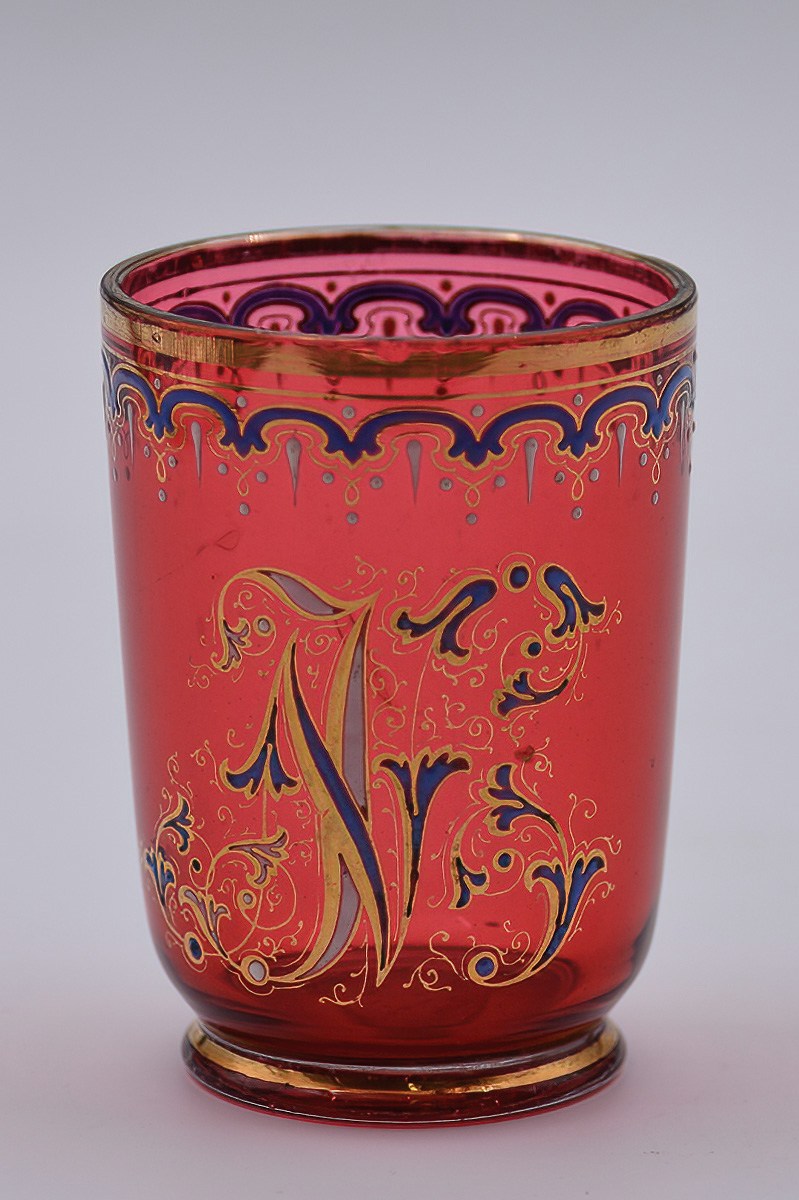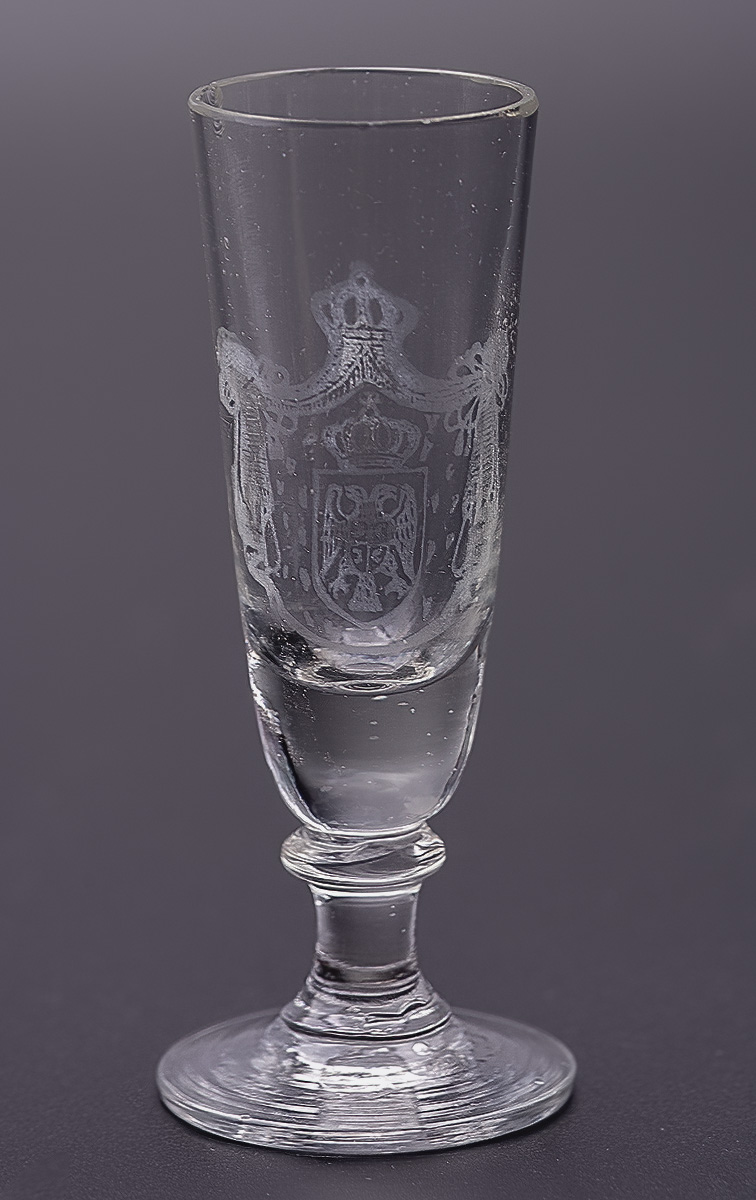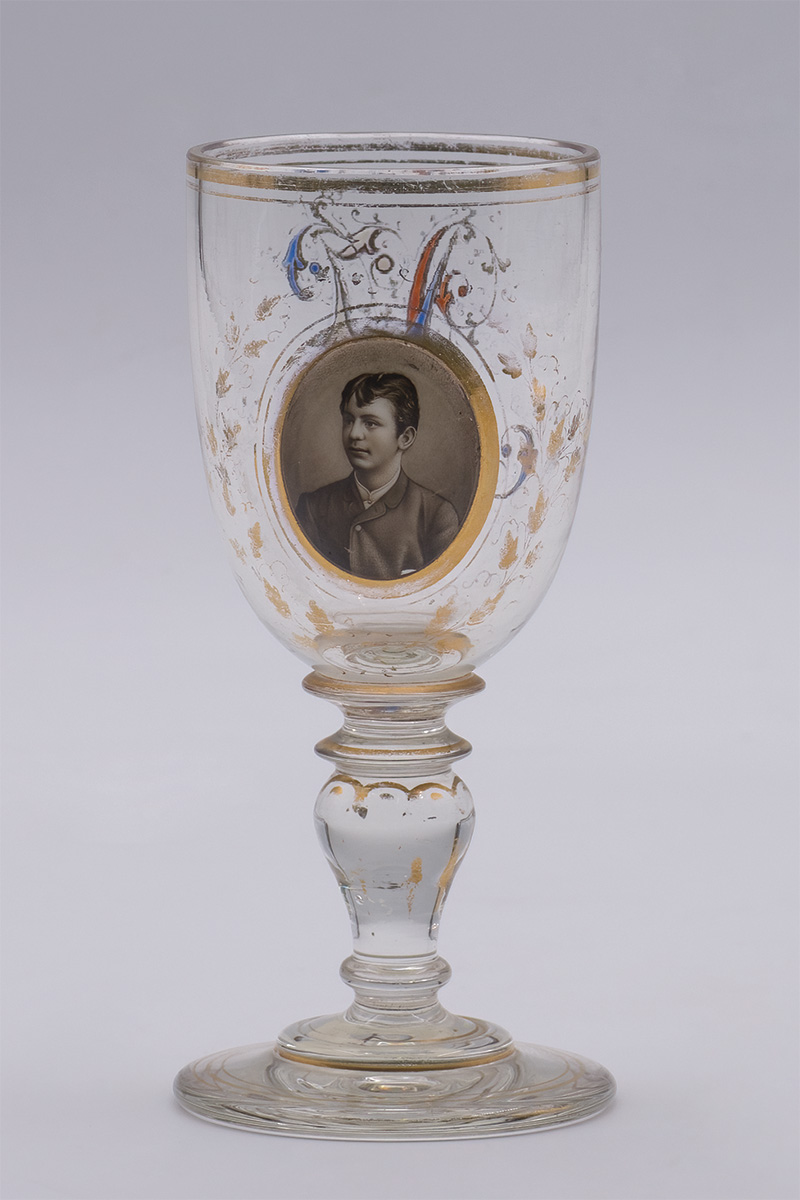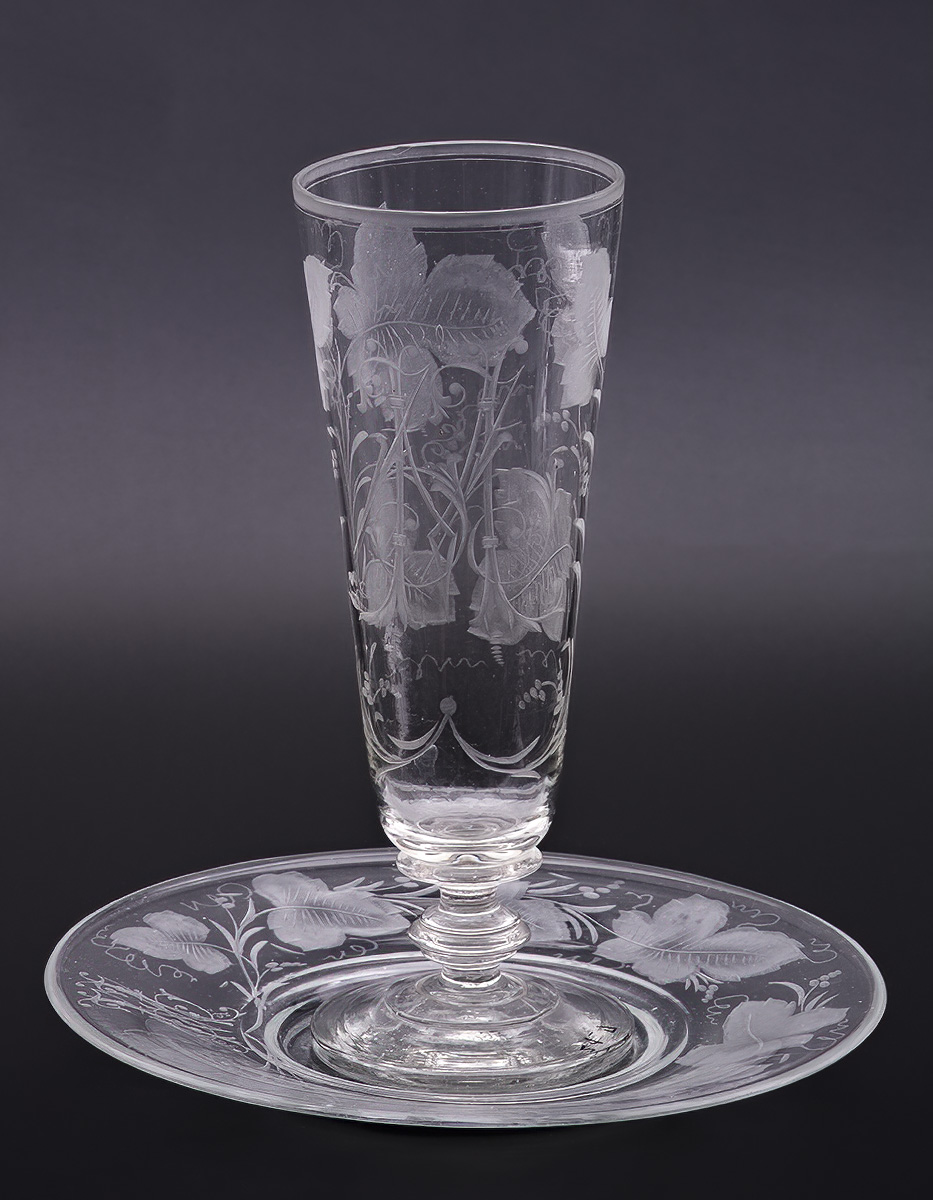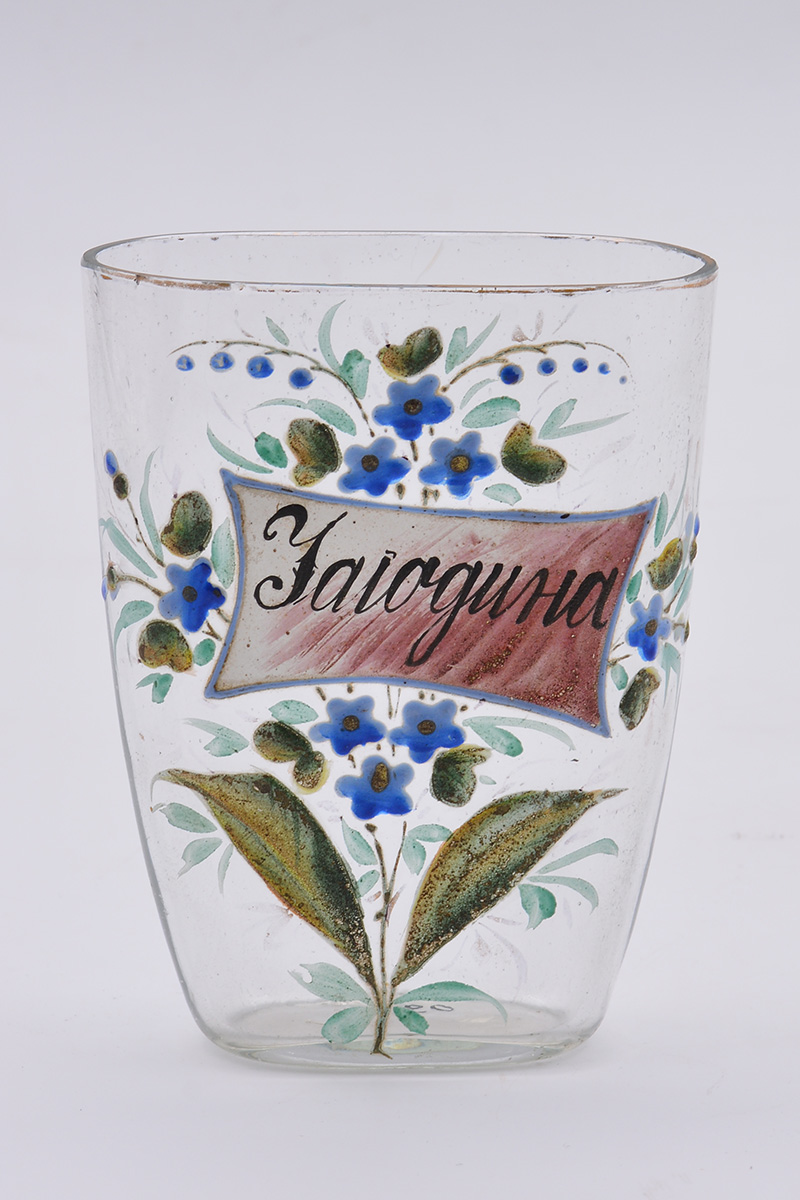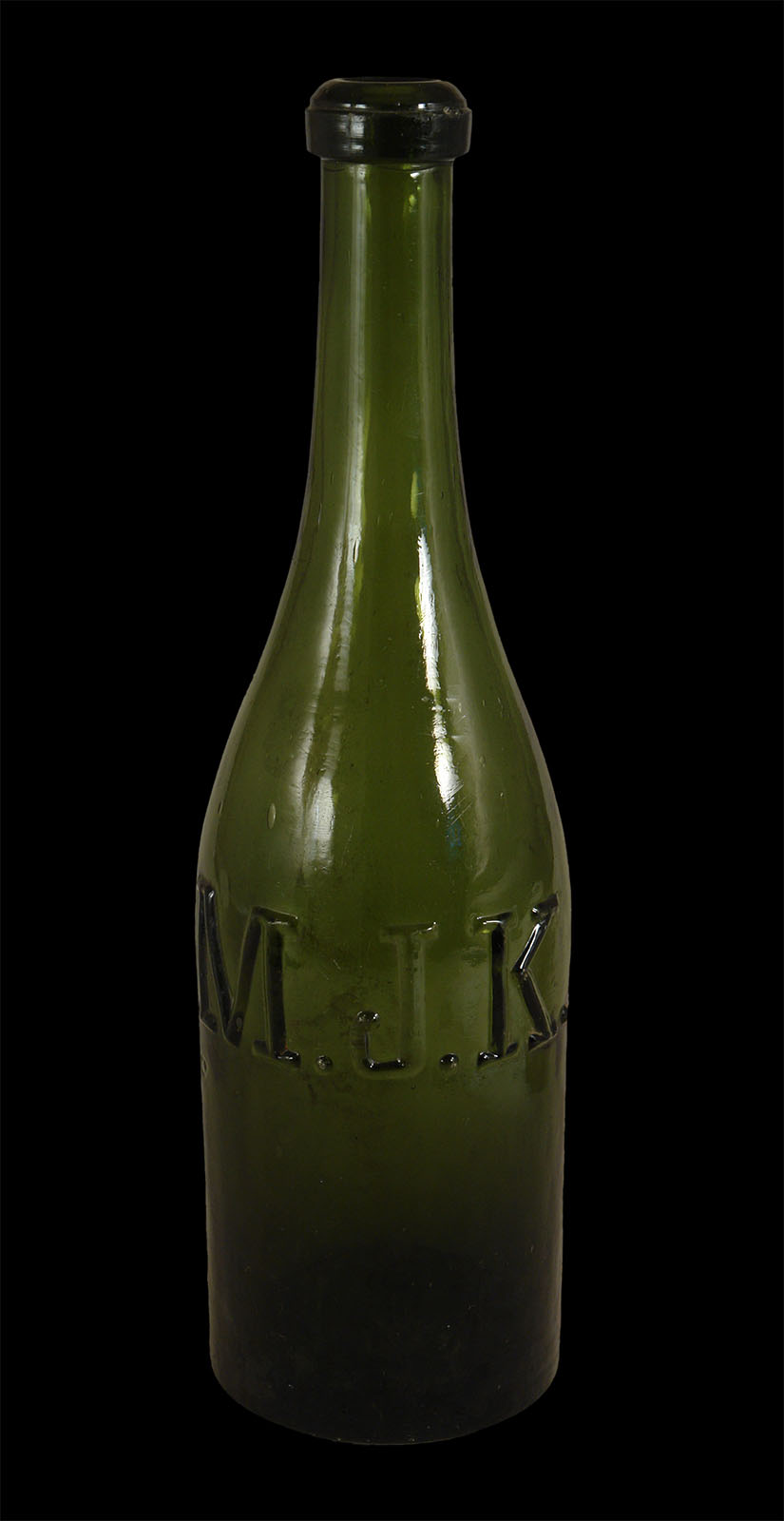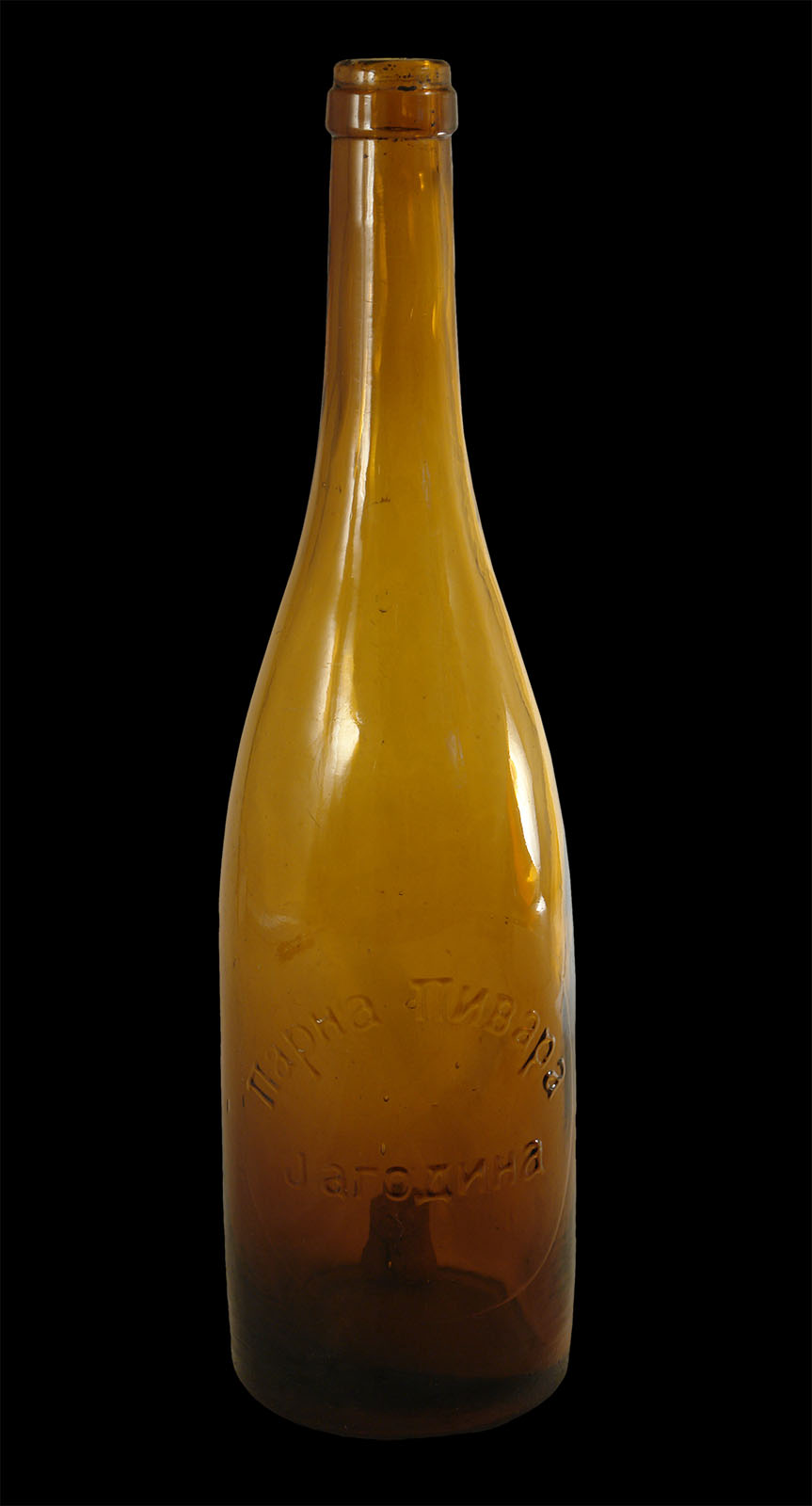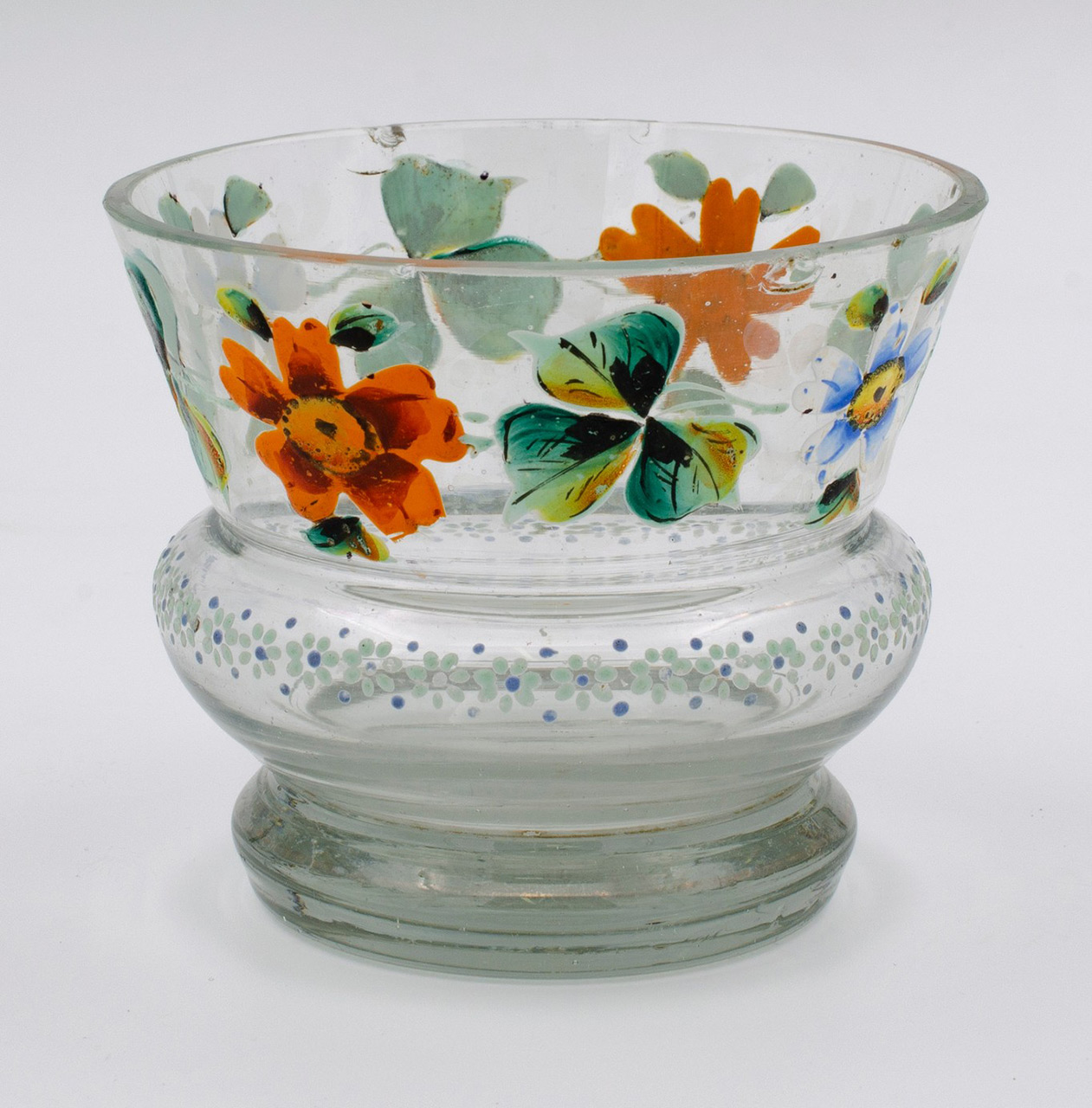Virtual Gallery of the Regional Museum Jagodina
Author of the exhibition: Jasmina Trajkov
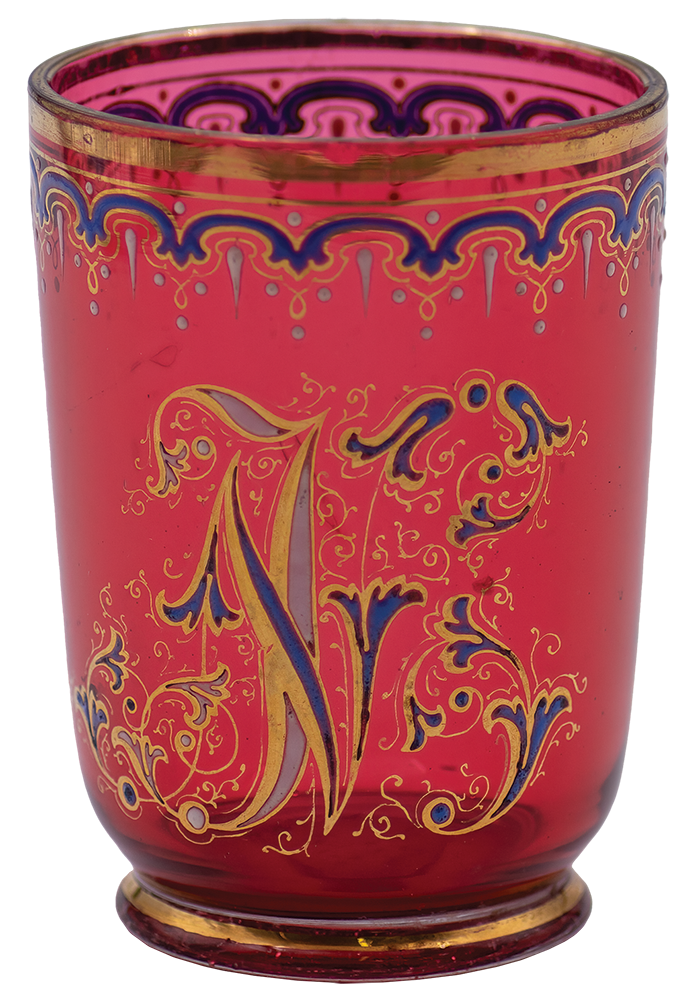
The Collection of Glass preserves glass objects that were in use in Jagodina houses from the end of the 19th to the middle of the 20th century, as well as various glass packaging like beer bottles with the label of Jagodina Brewery which owner was Mihailo Kosovljanin, pharmacy bottles from pharmacies in Jagodina and Svilajnac that worked in the period between the two world wars, as well as glass used in catering facilities.
The latest research has changed the dating of a large number of items from this collection, ie their attribution, so it is most likely that we do not have items in the collection produced in Avram Petronijević’s glassworks. However, the findings of glass fragments, glass mass and parts of the brick kiln found in the village of Mišević, on the location where Petronijević’s glassworks used to be, were brought from field research. These findings are a valuable testimony to the production of glass in this factory.
The most important items from the collection are certainly those made in Nacko Janković’s glass factory, while the largest part of the glass in the collection is imported glass, mostly Austro-Hungarian, as well as glass items produced in the Serbian glass factory in Paraćin.
Virtual exhibition
The revival of Serbian glass production came after the adoption of the Law on Support of Domestic Industry from 1873. Julijе Bozitovac received a permit for the establishment of a new glass factory in Jagodina in 1879. The factory was located at the end of the Levačka čaršija, on the old road towards Kragujevac. By the decree of Prince Milan Obrenović from August 7, 1879, Bozitovac was allowed to start working and exploit raw materials, as well as to import machines, parts of machines, devices, tools and other materials for making glass from abroad within ten years, without paying customs duties and taxes. Not much is known about Julije Bozitovac. He was a Serb from Pest, a businessman who was engaged in various businesses from the 1860s to the 1890s, primarily trade. He imported goods from abroad and it is possible that he also worked as a supplier to the Serbian court.
In the glass factory of Julije Bozitovac, the glass was made of broken glass with the addition of soda. According to the writings of the local press: “Mr. Bozitovac had an account that by making products from the simple (greenish) mass, he will be able to perfectly beat the competition of foreign imports, even in spite of today’s customs tariff. However, if the tariff for finer items increases over time, or if there are enough orders for these, he will be able to make them too.” In this text, it is learned that the workers in the glass house were “our compatriots – Slovenes, and our people also help them.” The apprentices are mostly local boys, who are trying very hard to learn the job. This is due to the unusual care of Mr. Bozitovac, so that the local sons can learn this important job.” The same journalist concluded that “we openly and with full conviction claim that the products of this factory, in terms of quality and national taste, far surpass foreign production of this kind.” The factory did not have the funds to modernize and thus increase production, so for those reasons it had to stop working.
The glass factory was bought from Bozitovac in the early 1880s by Nacko Janković, a merchant from Jagodina, with the associated capital of his father-in-law Mika Arandjelović. The masters were Czechs, Slovaks, Germans and Slovenes. Janković and Arandjelović broke off their partnership in 1896, so the factory was then registered under the name “Nacko Janković and son” instead of earlier “Nacko Janković and company”.
The glass factory was spread over four hectares on the same location as the glass house of Julije Bozitovac. In addition to the factory building with furnaces and engine room, there was also a grinder and engraving shop, two large warehouses, offices, guards, canteens, butcher’s, bakery and grocery store for workers, horse stables, sheds for raw materials and transport.
During the last decade of the 19th century, Felix Kanitz visited this factory and left a record of it. He wrote: “Across the stone bridge I arrived at a conglomerate of smaller buildings; in the largest of them, next to one dome furnace with six fireplaces, Hungarian-Slovak workers made a variety of glass products by blowing. One modeler, one glassblower and a Serb apprentice are employed at each fireplace. In the other house, there is a grinding machine connected to the steam engine, in which eight German Czechs make finer goods: letter presses, octahedra, then matting, decorating, etc. of various utensils, plates, lamps, etc. The best, mostly objects made to order are transferred to the studio of a German painter, who decorates them with gold border lines, glittering ribbons, ornaments, initials, coats of arms, etc. Other rooms include a turner who makes beech wood molds, a potter who prepares fire-resistant melting vessels, and a smelter who prepares glass mass for the finest goods. The best kind of quartz, which is used here, was obtained in Belica and immediately ground to a powder on the spot; the only potash in Serbia is produced for this factory in the surrounding forests.”
During the last decade of the 19th century, the factory was moved to a new location, near the current Belgrade-Niš highway, 800 meters from the train station and 100 meters from the last houses in the city. The new location was about two hectares and was owned by the Janković family. The factory had one oven with eight pots. Until 1886, a steam engine for grinding glass of six horsepower was purchased, and later a new Siemens regenerative furnace system was introduced, which has been fired on coal.
The factory produced various drinking and food containers, bottles and balloons, paper weights, lamp cylinders, medical glass, etc. More luxurious products, as well as crystal glass, were made to order. Flat window glass was not produced. Glass objects were made by the technique of blowing (in a mold or by hand molding) and pressing. Items were often decorated by painting, sanding, matting or engraving. The factory supplied glass to consumers throughout Serbia, and had its warehouses in Belgrade, Kragujevac and Niš, as well as in Prilep and Skopje.
The quality of the products of Nacko Janković glass factory was confirmed by the awards. At the World Exhibition in Paris held in 1889, the products of this factory won a bronze medal. Recognition of glass from Jagodina was also awarded at the exhibition in Kruševac held on September 14, 1891. At this exhibition were presented the natural resources, folk handicrafts and industrial products of this region. The Jagodina glass factory participated as a guest and the exhibited products were praised.
The production of glass in Nacko Janković’s factory did not meet the needs of the domestic market, so glass items were imported, which was not in favor of the Serbian factory. The company had financial problems, as well as unpaid debts to the Class Lottery and Jagodina Savings Bank, from which a cash loan was taken. The factory stopped production in 1904. Nacko Janković’s son, Dušan, turned to the state for help, but despite the will to preserve the only domestic glass factory, it was most likely closed in 1907.
Glass production in Serbia has been moved to Paraćin. In 1907, the “Serbian Glass Factory AD” started operating in this city, which was founded by a joint stock company of several Belgrade merchants headed by Milivoje M. Popović and Sava V. Savić.



